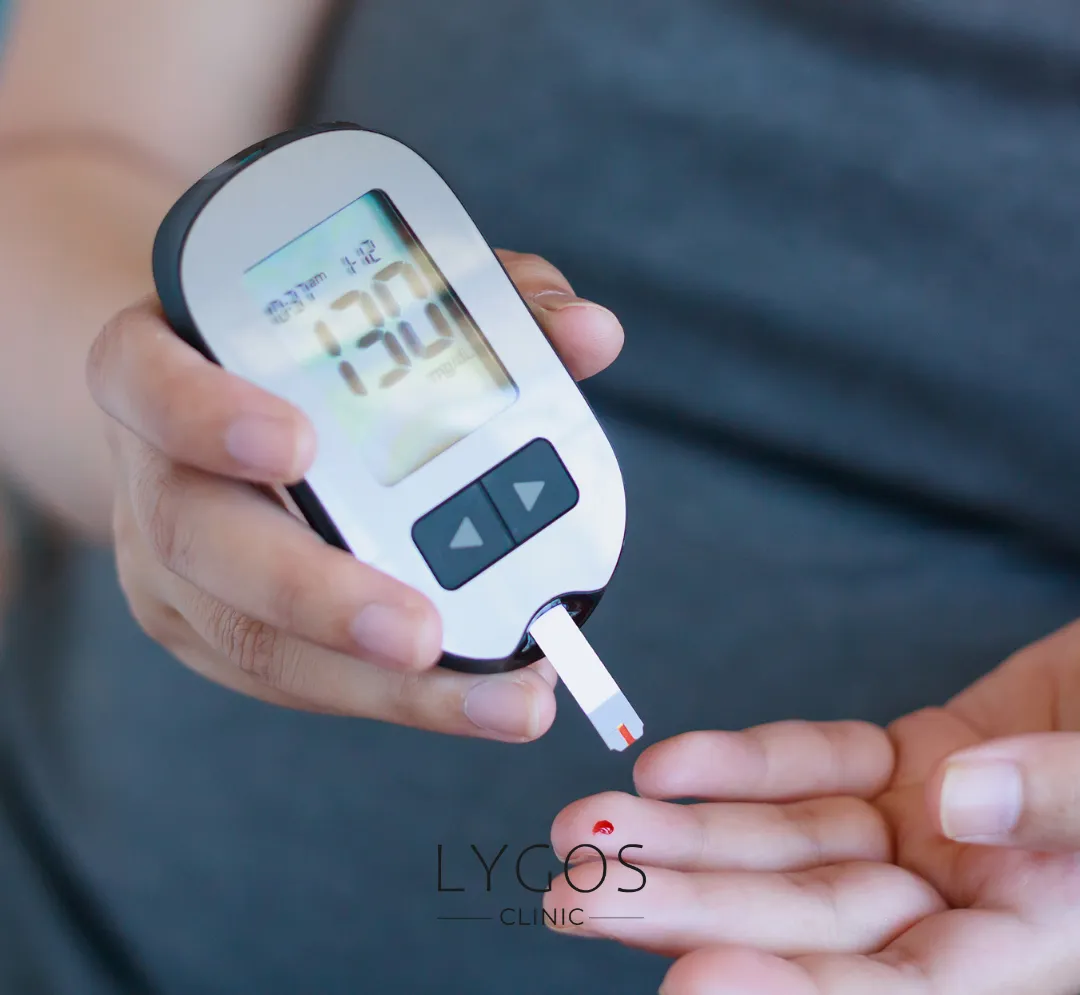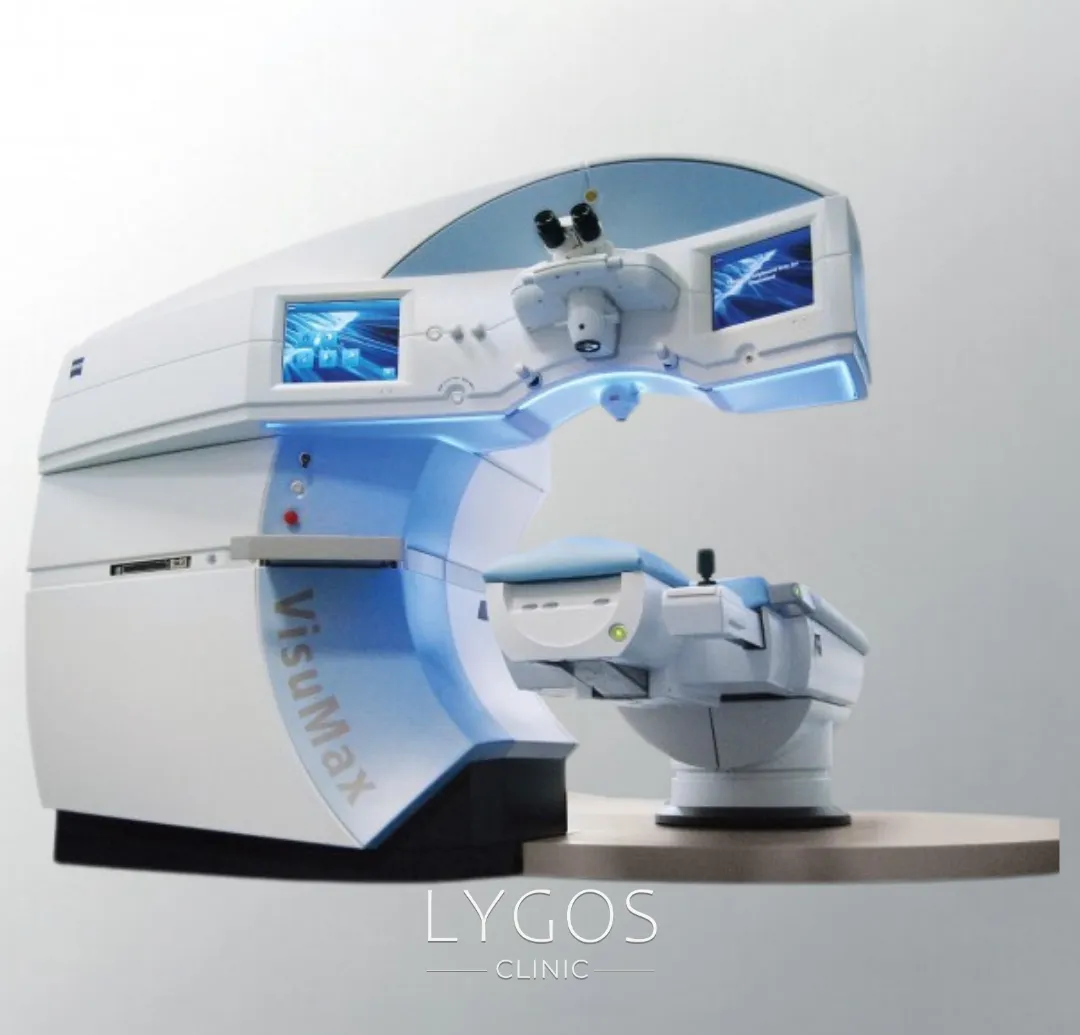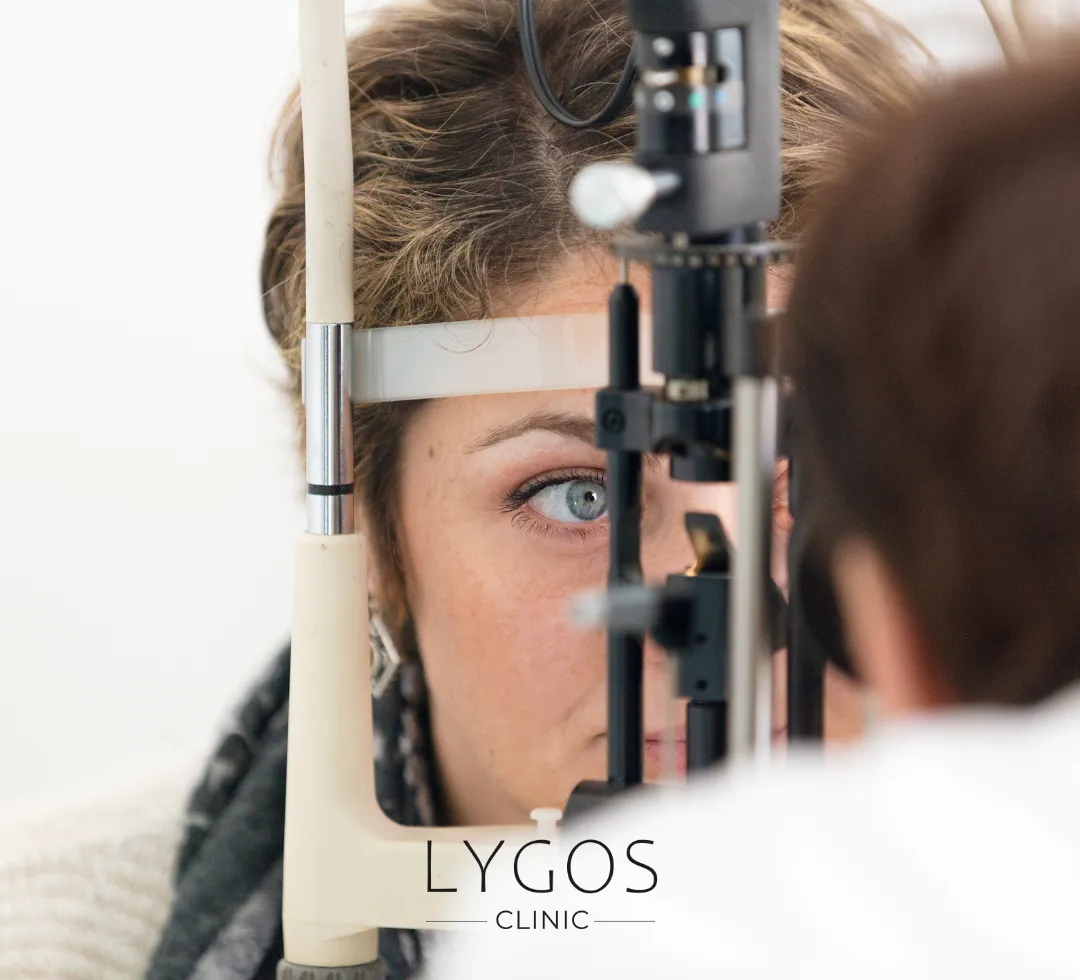What is Diabetic Retinopathy?
Get Free Consultation
Chose Your Topic

What are the Symptoms of Diabetic Retinopathy?
The effects of diabetes on the eye can be analyzed in three main stages. So, what are the symptoms of diabetic retinopathy? In the first stage, diabetes is present, but the eye is not yet affected and vision is normal. In the second stage, changes begin in the eye that can be detected during an examination. Vision is still preserved. In the third stage, vision gradually begins to decline. In this stage, severe vision loss may occur suddenly.
Diabetic retinopathy is diagnosed with a fundus examination, which involves dilating the pupil. This examination evaluates the retinal layer at the back of the eye. Fundus Fluorescein Angiography (FFA) and Optical Coherence Tomography (OCT) tests are performed to further understand the extent and progression of the disease in the eye. These tests provide detailed information about the condition of the retinal vessels and structural changes in the retinal layer.
How is Diabetic Retinopathy Surgery Performed?
Diabetic retinopathy is a serious eye disease that occurs as a result of damage to the blood vessels in the retina. In this disease, if fluid leaking from the vessels (edema) accumulates in an area of the retina close to the visual point, it can lead to vision loss. Laser treatment is used to control this condition.
So, how is diabetic retinopathy surgery performed? Laser treatment is also used in the presence of abnormal vascular tangles in the retina. These vascular tangles form in areas of the eye that cannot be nourished and, if left untreated, can suddenly crack and bleed into the eye. This can cause sudden loss of vision. Laser treatment aims to reduce the risk of bleeding by removing these damaged vessels.
However, if bleeding into the eye occurs despite all precautions and leads to sudden loss of vision, a surgical intervention called vitrectomy may be required. During a vitrectomy, the blood-filled vitreous fluid inside the eye is removed. This can help restore vision. These treatment methods are critical to control the complications of diabetic retinopathy and prevent vision loss in patients.


Who is Suitable for Diabetic Retinopathy Surgery?
Diabetic retinopathy is a serious eye condition that can be seen in patients with both Type 1 and Type 2 diabetes. However, the course of the disease may differ in these two types of diabetes. In people with Type 1 diabetes, retinopathy usually occurs at an earlier age and the disease is more severe.
Sudden and severe vision loss is more common in these patients. On the other hand, diabetic retinopathy in people with Type 2 diabetes progresses more slowly and vision loss usually develops gradually. Blood glucose control plays a critical role in the development of diabetic retinopathy. Individuals who do not regularly take their medication or watch their diet are at greater risk of this eye disease.
The risk increases especially in people with a high HbA1C value. The higher this value, the greater the likelihood of developing retinopathy. Therefore, keeping blood sugar under strict control is vital to reduce the risk of diabetic retinopathy.
Diabetic Retinopathy Pathophysiology
It is very important to study the diabetic retinopathy pathophysiology. This is a serious eye disease that occurs as one of the long-term effects of diabetes and is a major cause of vision loss. It affects approximately 80% of people who have been living with diabetes for 20 years or more, causing damage to the retina and compromising vision. However, with regular eye checks and appropriate treatment, it is known that the number of new cases can be reduced by 90%.
The longer you have diabetes, the more likely you are to develop diabetic retinopathy. Each year in the United States, blindness from diabetic retinopathy accounts for 12% of all new cases of blindness. It is also the most common cause of blindness in people between the ages of 20 and 64. Therefore, early detection and effective treatment of diabetic retinopathy is vital to prevent vision loss.


Diabetic Retinopathy Injection Therapy
In the treatment of diabetic retinopathy, injections into the eye are a highly effective method. Diabetic retinopathy injection therapy is performed by injecting medication into the vitreous cavity inside the eye with a thin needle.
The injections work by preventing capillary leakage (macular edema) and bleeding in the retina. At the same time, these drugs also stop abnormal blood vessel growth, so that macular edema is reduced or disappears completely. Also, intraocular hemorrhages are cleared.
Because each patient's treatment process and needs are different, the number of injections into the eye varies from person to person. However, when blood sugar is kept under control, the frequency of injections usually decreases during the treatment process. These medications can have a short-term (1 month) or long-term (3-4 months) effect. Drugs with long-term effects are administered in the form of steroid-containing implants. In rare cases, these implants can cause side effects such as cataracts or glaucoma (eye pressure). In the treatment of diabetic retinopathy, regular eye examinations and blood glucose control are vital to optimize the treatment process and minimize the risk of complications.
Diabetic Retinopathy Laser Treatment
In advanced diabetic retinopathy, abnormal blood vessels in the eye can grow and bleed into the vitreous, pulling or tearing the retina, resulting in severe vision loss and even blindness. Diabetic retinopathy laser treatment can be used to treat this condition. Therefore, a surgical procedure called “vitrectomy” is performed.
This operation cleans the bleeding inside the eye, burns the bleeding vessels and repairs tears in the retina. Sometimes buffers such as silicone oil are placed in the eye to promote permanent healing. Thanks to modern surgical techniques, laser treatment of diabetic retinopathy can be performed through incisions of only half a millimeter and without stitches.
Vitrectomy surgery is usually performed as a day treatment that does not require hospitalization. If vitrectomy is needed in both eyes and there is no emergency retinal tear, the second eye is operated on after the first eye has fully recovered. This process is critical for the patient to preserve their vision and maintain their quality of life.


Proliferative Diabetic Retinopathy
As the disease progresses, severe non-proliferative diabetic retinopathy progresses to an advanced stage where new blood vessels grow uncontrollably. This stage is called proliferative diabetic retinopathy (PDR). The lack of oxygen in the retina leads to the formation of fragile, new blood vessels along the retina and in the gel-like vitreous humor that fills the inside of the eye.
Without timely treatment at this stage, these new vessels can bleed, blurring vision and damaging the retina. Furthermore, this process, known as fibrovascular proliferation, can cause tractional retinal detachment. The growth of new vessels into the anterior chamber of the eye can lead to another serious complication known as neovascular glaucoma.
Non-proliferative diabetic retinopathy usually presents as cottony spots, microvascular abnormalities or superficial retinal hemorrhages. However, advanced proliferative diabetic retinopathy (PDR) can progress asymptomatically for a long time. Therefore, it is crucial to closely monitor the disease with regular eye examinations. Early diagnosis and timely intervention play a vital role in preventing serious vision loss.
Diabetic Retinopathy Surgery Costs
Major advances in diabetic retinopathy surgery options in recent years have enabled patients to be treated more quickly and effectively. Therefore, there are several factors that determine the diabetic retinopathy surgery costs. The location and equipment of the health institution where the operation will be performed, the experience of the surgeon and his team, and the quality of the materials used are among these factors.
Before diabetic retinopathy surgery, it is important that the patient undergoes a detailed examination and the most appropriate treatment method is determined. Without completing this process, it is not possible to give clear information about the diabetic retinopathy surgery costs. You can get detailed information about diabetic retinopathy surgery costs and other questions by contacting us.

Get a quote for Diabetic Retinopathy Surgery
Frequently Asked Questions About Diabetic Retinopathy
High blood sugar levels caused by diabetes have damaged the blood vessels in the retina layer of your eye. The retina is a thin layer filled with special cells that detect light. This layer transmits signals to the brain that form the basis of our vision. The retina contains sensory cells that both detect colors and distinguish between light and dark, and these cells carry information to the brain via the optic nerve.
However, your diabetes has damaged these sensitive blood vessels in your retina. High blood sugar levels can cause these vessels to weaken and bleed. This causes damage to the retina. This kind of damage may not cause any symptoms at first. But when retinal bleeding or damage develops, you may notice gray spots or shadows in your eye, and you may also start to experience vision problems.
In some cases, it is also possible to see objects distorted, blurred or in different colors. When you notice these symptoms, it is vital to contact a specialist as soon as possible. Early diagnosis and treatment can prevent vision loss and help you maintain the health of your retina.
BLOG

Is Breathing Through the Mouth Harmful?
Chose Your Topic Is Breathing Through the Mouth Harmful? Breathing is one of the most fundamental needs of life. However,

Does Rice Water Make Hair Grow? | Benefits of Rice Water
Chose Your Topic Does Rice Water Make Hair Grow? Natural methods in hair care have become quite popular in recent

Breast Lump | Types: Benign, Malign and Causes | LYGOS 2025
Breast Lump While cancer stands out as one of the most common health problems today, early diagnosis rates are also





